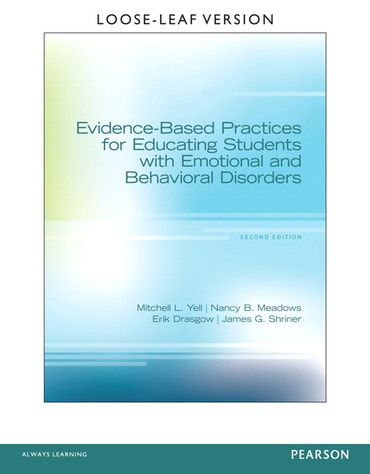Switch content of the page by the Role togglethe content would be changed according to the role
Evidence-Based Practices for Educating Students with Emotional and Behavioral Disorders, 2nd edition
Published by Pearson (January 18, 2013) © 2014
- Mitchell L. Yell University of South Carolina
- Nancy B. Meadows
- Erik Drasgow
- James G. Shriner
eTextbook
C$54.99
Need help? Get in touch

